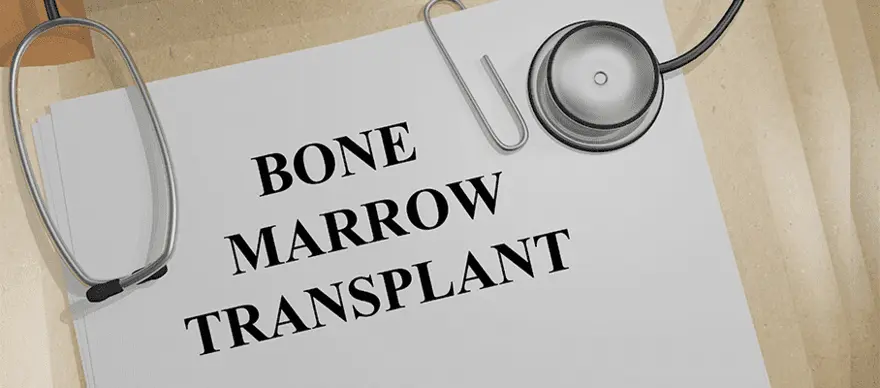Health Test
Bone Marrow: Know Functions of Bone Marrow, Histology & Types
12558 Views
0

Bone marrow is the largest organ in the human body, accounting for almost 5% of the human body weight. It is responsible for the formation of the blood's cellular components. It appears like soft and spongy tissue. The safety and toxicity assessment of the blood-related disorders can be done by studying the bone marrow. Hence a chemical or a toxin causing harm to the bone marrow can be detected by the histology changes in the bone marrow.
You can get to know every aspect of bone marrow histology, different types of bone marrow, and the important features of the bone marrow in this article.
Where is the Bone Marrow Located?
The bones in your body are anatomically made up of 3 parts: compact, spongy, and marrow. The compact bone represents the outer layer of bone and is comparatively stronger. The spongy part forms the end parts of the bone. The bone marrow forms the centre portion of the compact bones and is present at the end parts of spongy bones. The bone marrow is most commonly located in the cavities of long and axial bones; thus, it fills up the cavity of bone and blood vessels.
Bone marrow is not rigid like bone. It is jelly-like and fills the cavities left by the trabecular network.
What are the Functions of Bone Marrow?
The two main functions of the bone marrow are as follows:
- To produce the blood cells like red blood cells (RBCs or erythrocytes), platelets, and white blood cells (WBCs, namely lymphocytes, granulocytes, and monocytes). This is highly vascular and constitutes Red Bone Marrow.
- To store the fat. It has adipocytes (fat cells) and constitutes Yellow Bone Marrow. It is comparatively less vascular than red bone marrow.
What are the Histological Characteristics of the Bone Marrow?
In order to diagnose an abnormal finding, it is necessary to understand the normal make-up of the tissues and cells (histology) that constitute the bone marrow. You, therefore, need to know the normal bone marrow histology. It shows the following characteristics:
- The exterior of the bone shows the presence of cartilage tissue and tendons. The interior hematopoietic tissue islands and adipose cells are surrounded by vascular sinuses and held within a meshwork of trabecular bone.
- The outer surface of this meshwork has cells known as osteoblasts. Occasional multinucleated osteoclasts are also present at the trabecular margins.
- Arterioles and venules occupy the interspaces between the meshwork.
- Bone marrow stroma consists of a heterogeneous mixture of adipocytes, fibroblasts, macrophage-like cells, and a complex extracellular matrix.
- Normal histology biopsy specimens show 40-60% non-bony tissue composed of hematopoietic cells. Cellularity will change depending on age. Granulocytes and monocytes are distributed in the specimens, while mature megakaryocytes are easily seen due to their large volumes.
- A normal bone marrow histology also shows the presence of lymphocytes, mast cells, and plasma cells.
What are the Different Types of Bone Marrow?
There are two types of bone marrow - red and yellow.
- Red bone marrow consists of hematopoietic stem cells that produce the components of your whole blood: RBCs, WBCs, and platelets.
- Yellow bone marrow is responsible for storing fat. It hosts adipocytes and mesenchymal stem cells. These cells preserve fat used in energy production and help develop bones, cartilage, muscles, and fat cells.
Fact: Your red bone marrow makes up the entire bone marrow almost until age 7. As you grow gradually, it is replaced by the yellow bone marrow.
What are the Key Features of the Bone Marrow that Make it an Important Organ?
Here are some key features of the bone marrow:
- The bone marrow is an important part of your body as it daily produces the whole blood components without which your survival is not possible.
- The RBCs produced by the bone marrow provide oxygen to the whole body. The WBCs prevent and fight infections while the platelets control bleeding.
- It also stores fat that helps in the production of energy.
- Any dysfunction or abnormality in your bone marrow can be dangerous and even fatal.
- The common symptoms you may experience if your bone marrow is not properly functioning include -
- Anaemia
- Frequent bruising
- Bleeding
- Frequent infections
- Tiredness
- Muscle weakness
What are the Diseases of Bone Marrow?
- Leukaemia is a blood cancer. The bone marrow makes abnormal WBCs.
- Lymphoma is a cancer of the lymphatic system, and bone marrow may get involved.
- Aplastic anemia is a condition in which RBCs are not formed in the bone marrow.
How is the Abnormality in Bone Marrow Detected?
The cells present in the bone marrow, its architecture, and the other features of the bone marrow can be detected by performing some tests. These include -
- Biopsy: Removal of a small portion of the bone marrow using a needle
- Aspiration: Removal of the bone marrow concentrate using aspiration
- Histology and cell assessment: Further detection of an abnormality
A bone marrow test is hematopathology testing, which involves identifying cancerous changes in blood and bone marrow. It requires blood smears, bone marrow smears, and histopathology of tissue sections. Based on the clinical features and the condition the clinician may prescribe bone marrow tests from the list of various bone marrow profiles.
Can Bone Marrow be Replaced?
Bone marrow is the foundation of your blood cells, bones, and muscles. Maintain a healthy bone marrow with adequate proteins and vitamins in your diet. In certain cancers (leukaemia, lymphoma) that originate due to bone marrow abnormality, bone marrow stem cells from a healthy donor are transplanted into the bloodstream of the patient so that they can produce whole blood components.























 WhatsApp
WhatsApp